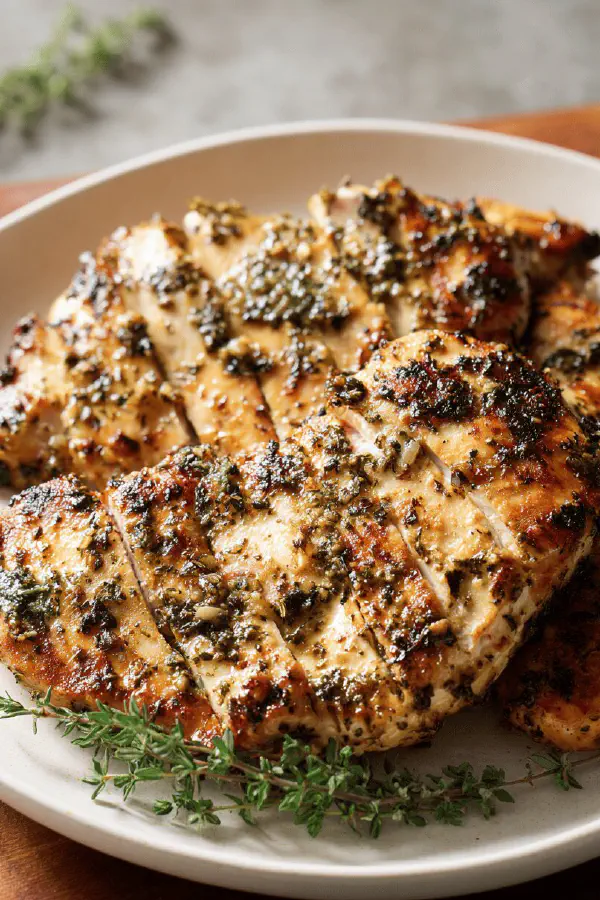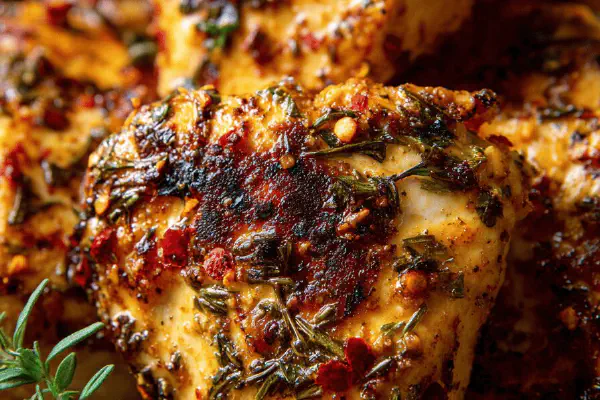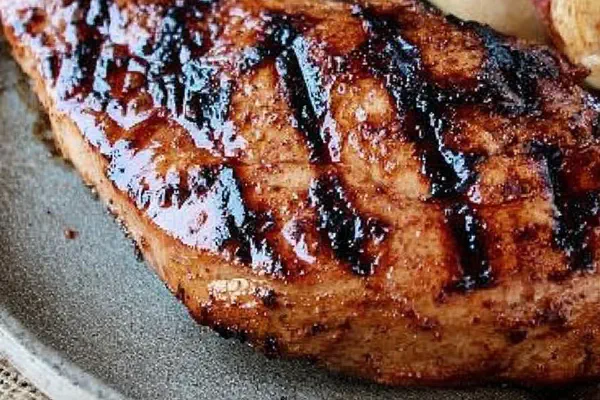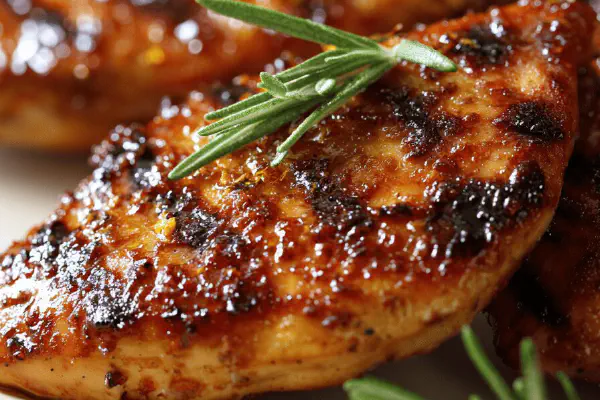Featured Recipe
Buttermilk Mustard Marinade

By Kate
"
A tangy marinade with a creamy buttermilk base thickened by Dijon mustard, pungent garlic, and fresh herbs. Scents of roasted garlic and sharp mustard build quickly over a few hours of refrigeration. Ideal for chicken, pork, or even firm fish, coating proteins in acid and spice to tenderize and season. Swapping cream for buttermilk optional. Salt and pepper adjust intensity. Marinate between 7 and 22 hours for best texture without breakdown. Garlic aroma signals readiness. Serve proteins grilled or pan-seared with a crisp crust.
"
Prep:
6 min
Cook:
0 min
Total:
Serves:
4 servings
marinade
buttermilk
grilling
pork
chicken
Introduction
Buttermilk holds more than tang. Its lactic acid starts breaking down protein, tenderizing quickly but gently. Mustard isn’t just heat, it’s texture — tiny mustard seeds add grip, a nod to mustard à l’ancienne. Garlic minced fine, but not pureed, hits a raw punch that cooks out as aromas spread. Fresh thyme? Look, dried won’t cut here. Bright herbal bite makes this more than wet flavor. Use for chicken, pork — or shrimp if you like a daring, thick marinade that clings. Timing always key. Under marinate? Flavors weak, texture rubbery. Over marinate? Meat mushy, unappealing. Watch bubbles forming on surface, garlic floats, signals acid working. Patience but watch closely.
Ingredients
About the ingredients
Swapping fresh garlic for roasted alters the punch — less heat but deeper caramel notes, better for pork. Dijon mustard is the base but coarse grain mustard can add texture and visual interest. If buttermilk not on hand, yogurt thinned with milk is a solid substitute — beware thicker liquids trap less moisture on meats and can hide how well marinade coats. Salt is crucial; too little, textures won’t soften, too much, they tighten. Fresh herbs add brightness; thyme or oregano work best. Black pepper freshly ground for sharp bite. Garlic must be finely minced or minced uniform to ensure consistent flavor dispersion. Adjust acid levels by increasing or decreasing buttermilk, watching for tang balance. Important: never reuse marinade unless boiled; bacteria risk.
Method
Technique Tips
Step one mixes all ingredients, no fuss. Use a shallow vessel or plastic bag to ensure even coating, massaging meat if using thicker cuts. Piercing meat with a fork helps penetration, speeding flavor absorption. Refrigerate minimum 7 hours; extending up to 22 max. Watch marinade bubbles—tiny spots form on the surface; acid’s active sign. Discard marinade after; marinade left on meat surfaces inhibits crisping and causes steaming during cooking. Pat meat dry and listen for sizzle on a hot pan or grill; that’s evaporation starting. Wait until juices run clear to ensure doneness but don’t overcook – dry texture is dead weight. Let rest before slicing — flavors redistribute, meat firms up, juices stabilize. Use kitchen timer but trust sight and sound cues more.
Chef's Notes
- 💡 For deeper flavor, pierce meat with a fork. Thicker cuts? More holes help. Use shallow bowls or bags for marinating. Ensure even coverage.
- 💡 Avoid over-marinating. Timing’s key. Too long? Flavors turn weak. Protein texture can suffer; rubbery isn’t appealing. Keep an eye on those bubbles.
- 💡 Want variations? Try different mustards. Coarse grain gives texture. Need substitutes? Yogurt thinned with milk works in a pinch. Just adjust ratios.
- 💡 Fresh garlic essential. Minced finely ensures it disperses properly. Roasted garlic? Milder, better with pork. Swapping herbs? Oregano may provide nice results.
- 💡 Check for doneness by noting sizzle sounds. Juices should run clear before taking meat off heat. Let rest before slicing — flavors will settle.
Kitchen Wisdom
What happens if I under-marinate?
Flavors weak, no depth. Texture rubbery. Shoot for minimum seven hours, watch bubbles forming.
Can I substitute ingredients?
Yes, yogurt thinned can replace buttermilk. Mustard types vary — coarse grain or Dijon works. Play around.
Any common issues?
Over-marinating leads to mushy meat. Under-marinating? Flavors don’t penetrate well. Timing’s crucial. Balance it.
How should I store leftovers?
Meat stored in fridge max 3 days. Marinade? Discard if unused. Better yet, boil if you want to reuse.



